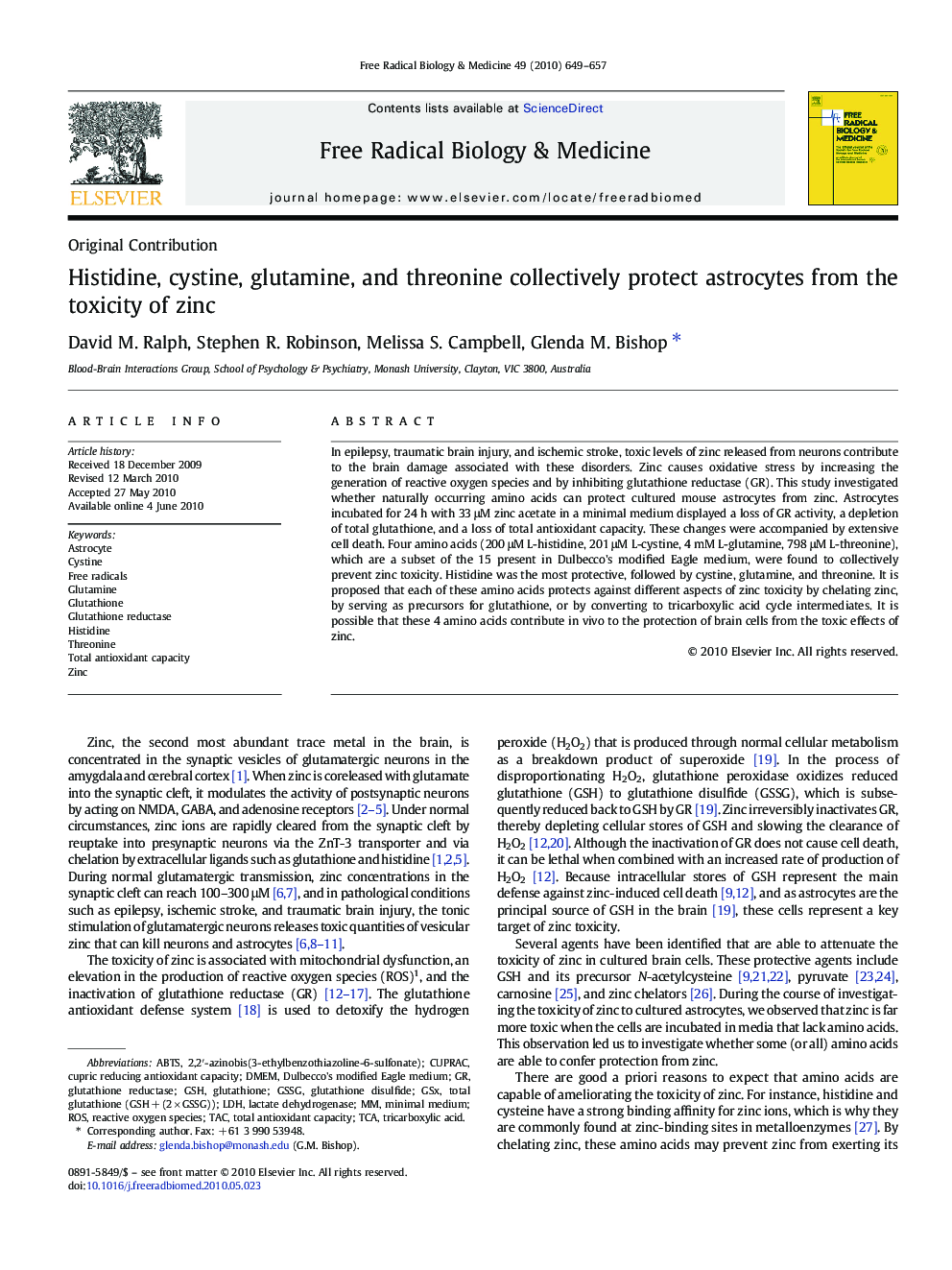| کد مقاله | کد نشریه | سال انتشار | مقاله انگلیسی | نسخه تمام متن |
|---|---|---|---|---|
| 1909274 | 1046717 | 2010 | 9 صفحه PDF | دانلود رایگان |

In epilepsy, traumatic brain injury, and ischemic stroke, toxic levels of zinc released from neurons contribute to the brain damage associated with these disorders. Zinc causes oxidative stress by increasing the generation of reactive oxygen species and by inhibiting glutathione reductase (GR). This study investigated whether naturally occurring amino acids can protect cultured mouse astrocytes from zinc. Astrocytes incubated for 24 h with 33 μM zinc acetate in a minimal medium displayed a loss of GR activity, a depletion of total glutathione, and a loss of total antioxidant capacity. These changes were accompanied by extensive cell death. Four amino acids (200 μM L-histidine, 201 μM L-cystine, 4 mM L-glutamine, 798 μM L-threonine), which are a subset of the 15 present in Dulbecco's modified Eagle medium, were found to collectively prevent zinc toxicity. Histidine was the most protective, followed by cystine, glutamine, and threonine. It is proposed that each of these amino acids protects against different aspects of zinc toxicity by chelating zinc, by serving as precursors for glutathione, or by converting to tricarboxylic acid cycle intermediates. It is possible that these 4 amino acids contribute in vivo to the protection of brain cells from the toxic effects of zinc.
Journal: Free Radical Biology and Medicine - Volume 49, Issue 4, 15 August 2010, Pages 649–657